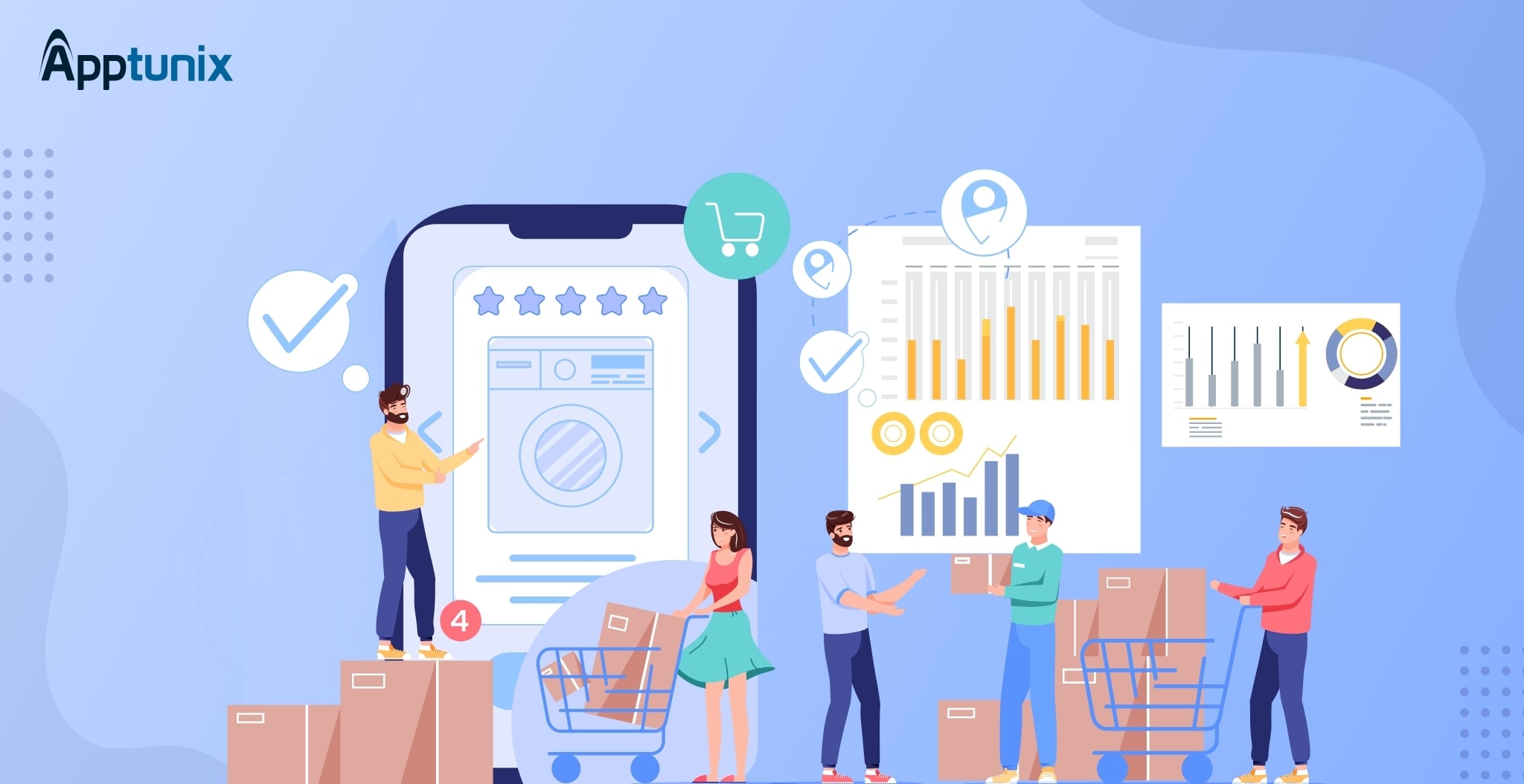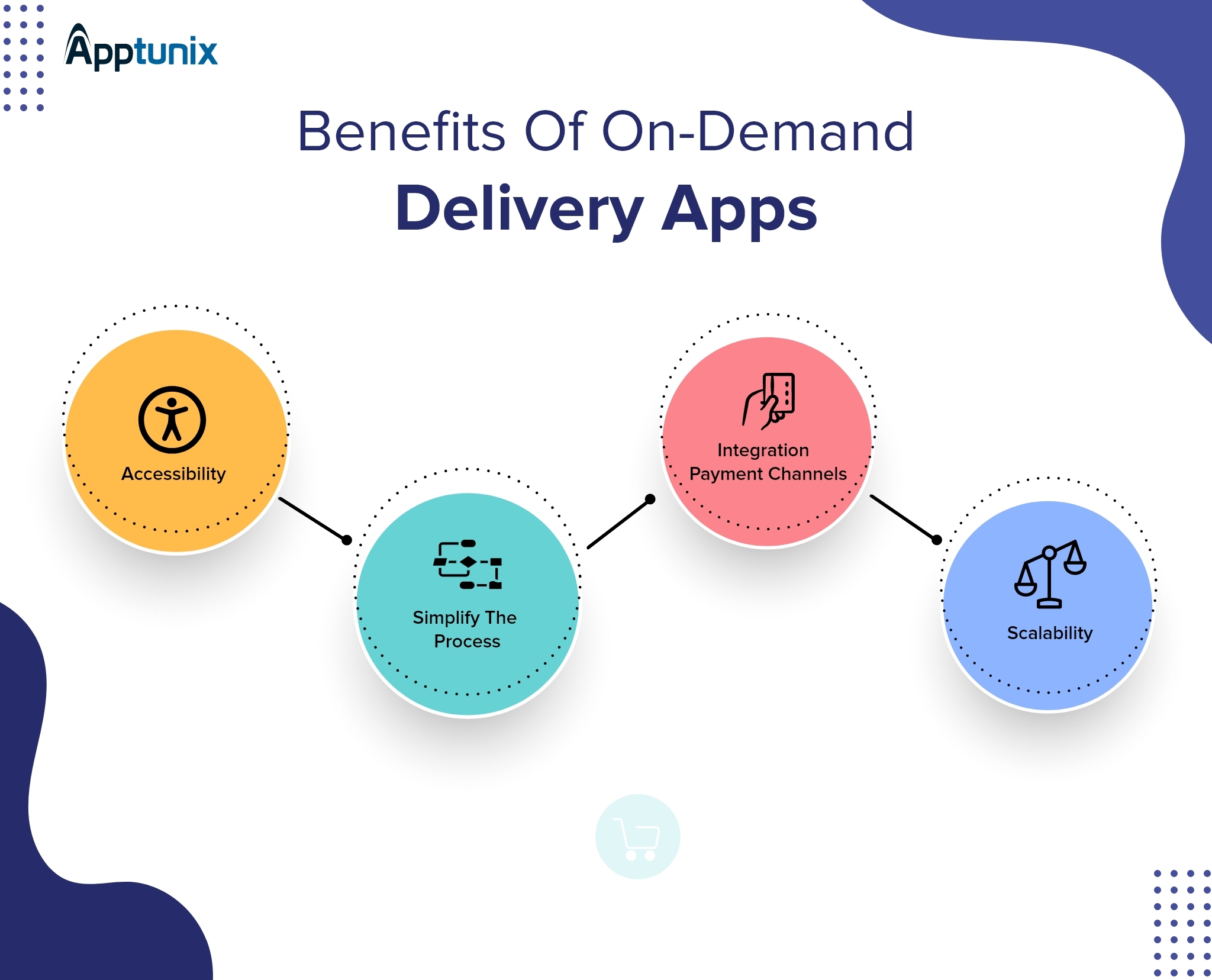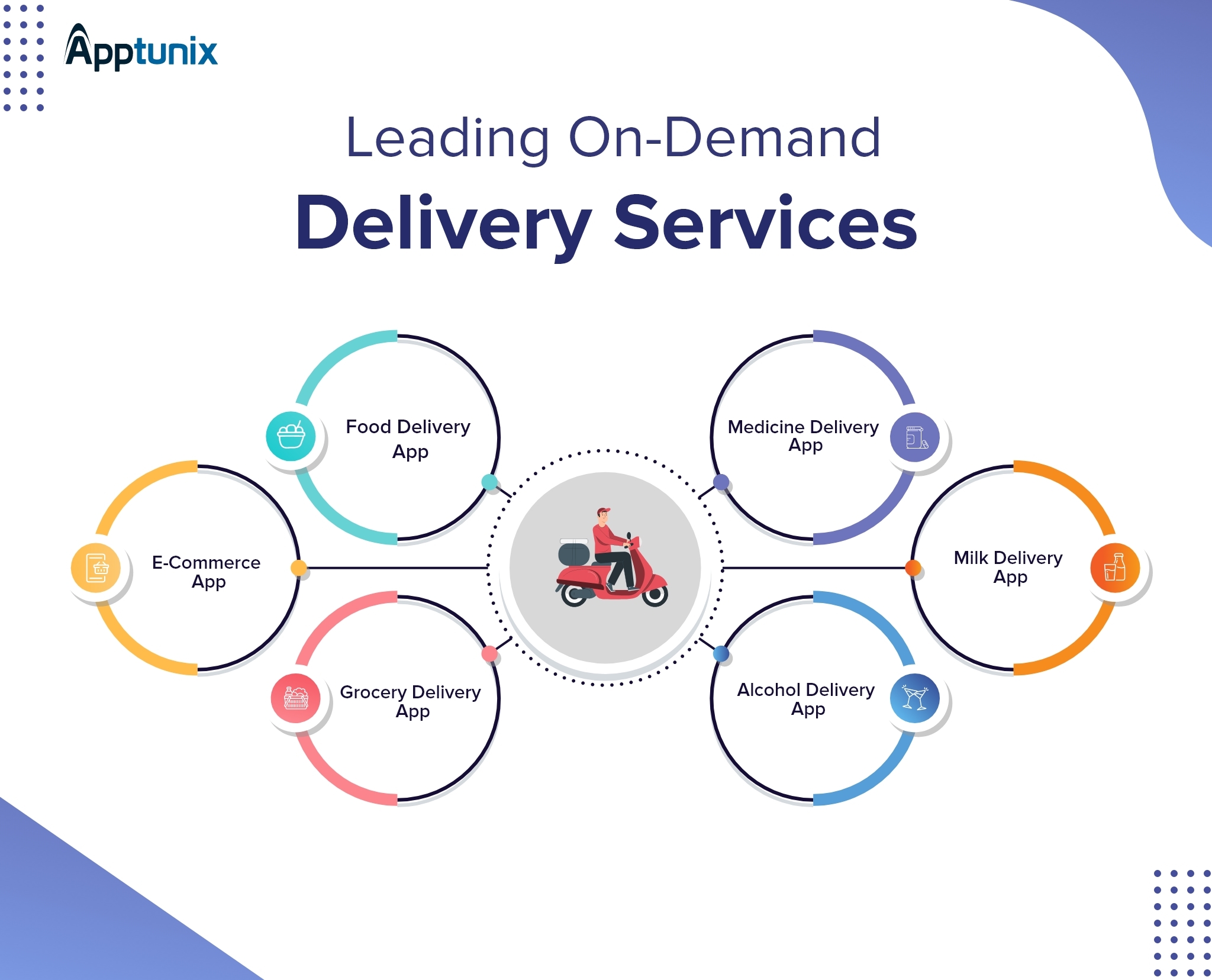Don't miss the chance to work with top 1% of developers.
Sign Up Now and Get FREE CTO-level Consultation.
Confused about your business model?
Request a FREE Business Plan.
Post-Pandemic Business Trends Of An On Demand Delivery App Industry
Table of contents

While the rest of the globe was imploding, several businesses, particularly The On Demand Delivery App industry, erred on the side of caution. As the demand for online products and services increased, the logistics industry was fast to restart operations. However, distribution operations now are not even near to what they were a few years ago. The pandemic’s uncertainty has caused a fundamental transformation in the business.
Businesses have been struggling to adjust to exceptional conditions over the previous nine months. While the struggle against the COVID-19 pandemic is far from over, there is at least a glimmer of optimism at the end of the tunnel—along with the hope that another train isn’t on its way.
The On Demand delivery sector was fast to adapt to the widespread disruption when the pandemic struck. Even during the most difficult hours, the delivery businesses ensured that items were delivered to their intended recipients. Several additional important items were delivered by dispatch services in addition to the medical supplies. They labored nonstop to meet the deadline.
Future Of An On Demand Delivery App After Covid -19
For post and parcel companies, the COVID-19 pandemic has functioned as a time machine to the future: demand for eCommerce is skyrocketing, but mail is rapidly declining. That leap is visible almost wherever you look. And the figures are staggering. European eCommerce had a rise of 71% in online orders, while Asia-Pacific eCommerce saw an increase of 82%.
Amazon will achieve sales levels predicted for 2025 this year. In May, eCommerce sales in the United States increased by over 93%, accounting for 22% of total retail sales, more than double the figure from the previous year.
Although the future remains unknown, our study suggests that eCommerce shipping volumes will stay elevated for the rest of the year, up to 30% or 40% higher than a year ago in some countries, even when seasonal tendencies in spending are taken into consideration.
Customers Have Changed Their Shopping Patterns
According to our findings, there is a substantial link between eCommerce growth and the length and severity of lockdown orders. Some of these behaviors will become permanent as individuals buy more online and others who previously did not shop online make it a regular channel.
According to our April consumer study, respondents who utilized online channels for less than 25% of their purchases before the pandemic increased their online activity from 1 in 20 to 1 in 6 – a 160% increase in online activity. The long tail of eCommerce adoption has been significantly reduced across all of the nations we analyze.
The In-Store Experience Is Broken
Shoppers are returning to physical stores at a slower rate than businesses would like. Foot traffic in the US’s 30 major urban areas, for example, is still 57% lower than pre-COVID-19 levels two months after reopening. Foot traffic in the UK is 41% lower, and even in areas like Germany, where the impact has been somewhat less severe than elsewhere, foot traffic is still down more than 10%.
When customers do go to stores, they are met with unappealing situations. Lines to get in because people’s capacity is restricted, masks and other social distancing measures, incorrect inventory, and limited merchandise are all factors that contribute to a shattered shopping experience.
A Growing Number Of Shops Are Converting To Local Fulfillment Centres
Retailers have hastened the transformation of their supply chains as a result of the closure of physical shops to customers. According to Accenture research, retailers experienced a 195% growth in click and collect order revenues, and demand for modest, local warehouse space has risen.
Both of these developments indicate that retailers are speeding up the conversion of physical shops into local fulfillment centers. By the end of the year, we expect local deliveries to account for half of all deliveries.
Benefits Of An On Demand Delivery App
The backbone of the supply chain is well-designed delivery software. It is difficult to maintain track of all consignments manually in today’s world. To achieve what a delivery program can do on its own, it would require a staff of hundreds. Here are some examples of how software may impact the industry:

- Accessibility: Delivery software allows businesses and customers to track the actual location of their freight. All you need is an internet-connected PC or smartphone to learn everything about your shipment. It is now easier than ever to get information on your package thanks to reliable delivery software.
- Simplify the process: In addition to being incredibly easy to use, the program streamlines numerous logistics stages. Route optimization and geofencing are two features that make it easier for administrators to keep track of their agents and their activities. After each team member has been allocated particular duties, they may provide instructions to their on-site personnel.
- Integration of various payment channels: While collecting cash is the least preferred option, online payment is becoming increasingly popular. Every online retailer and business has made the switch to digital payment methods. Receiving payments from customers is no longer an issue. Tookan can integrate with over 50 different digital payment gateways, giving businesses and customers a variety of payment options.
- Scalability: Businesses should always be prepared for a surge or dip in demand in times like these. It’s simple to adapt to the constantly changing demand with effective dispatch software. It makes no difference how big or small a company is as long as the work is dispatch-related.
Leading On Demand Delivery Apps In The World

1.Food Delivery App
The convenience of dining with a few taps on a smartphone has pushed people to download and utilize more online meal delivery applications. The growth rate of demand for food delivery applications shows how fast the gap between online and offline is shrinking, and how online demand will exceed offline demand in a few years.
Since 2014, the online meal delivery business has expanded at a 300% quicker rate than traditional dine-in sales. The ‘platform-to-consumer’ distribution market is anticipated to reach US$96.8 million worldwide by 2024, according to Statista. Given the effects of COVID-19, this increase is expected to continue for the foreseeable future.
2.E-commerce App
To increase online sales, the e-Commerce sector is seeing the most significant rise in mobile solutions development, which is driven by the need to meet client demands. Consumers demand the ability to buy goods and services at any time and from any location, even on the go. As a result, more online buyers choose mobile e-Commerce apps over websites because they provide superior speed, convenience, and flexibility.
We can see the immensity of the global eCommerce sector by looking at us and in our daily lives. According to several credible sources, the global e-commerce sale is anticipated to reach the 4.5 trillion USD level by 2021, which would give your hazy notion a physical shape.
The figures show that the e-commerce industry is expanding in several directions. The secret is out now, the industry is exploding like a weed, and you can get a piece of the action by developing your eCommerce mobile app.
3.Grocery Delivery App
The rising number of individuals who use grocery apps like gopuff is the major cause for the increase in demand for Grocery Delivery App development. Thousands of people will use an on demand grocery app, which has exploded in popularity in several nations.
With the increasing industrial industry, it is advancing in leaps and bounds despite the obstacles it faces. A growing trend in online grocery shopping has been seen, and a variety of reasons may be attributed to this, with the more impressive and active being the most prominent.
Dealers, customers, and delivery workers are all brought together by a grocery delivery app development company. So the software includes three user interfaces: one for dealers, one for consumers, and one for a delivery worker. Also available from the Mobile App Development Company is an On Demand Delivery App.
4.Medicine Delivery App
Although on demand medical consultations are still relatively new, they have already piqued the curiosity of patients, physicians, and clinics. According to Statista, the telemedicine industry was valued at $45 million in 2019 and is anticipated to increase at a 21.4% compound annual growth rate (CAGR) to $174 billion by 2026.
Patients are connected to doctors through on demand medical applications. Doctor on Demand is a wonderful example of a mHealth app that is available on demand. Users may utilize their mobile devices to interact with doctors one-on-one whenever and wherever they need to.
A physician does an examination and offers suggestions during a mobile consultation, just as he or she would during an in-person doctor visit. These services are also available 24 hours a day, seven days a week, which is handy.
5.Milk Delivery App
Convenience, simplicity, and quickness are key priorities for customers wanting to get their needs addressed. And all three are handled by an on demand delivery app.
An on demand milk delivery app, which allows users to obtain milk and other dairy goods delivered straight to their homes, is the most recent addition to this on demand category. Can you fathom the magnitude of this notion, given that milk is the most vital commodity in our lives?
The first thing that everyone looks forward to in the morning is meeting their necessities such as milk, eggs, butter, and so on. In addition, for individuals who are frequently late or pushed for time, an on demand milk delivery app might be a lifesaver. You may register with these applications, specify your location and daily needs, and receive guaranteed delivery at the time you specify every day.
6.Alcohol Delivery App
According to reports, alcohol sales in the United States grew by 291% by the end of March 2020 and then increased by 387% by the second week of April 2020. According to Statista, the liquor business is one of the world’s most important markets. In the year 2020, it is expected to have a revenue of 222,098 million dollars.
During the covid-19 era, the following statistics were gathered. The alcohol delivery app is in high demand; if you’d want to profit from it, contact the best mobile app development company today.

Trends In The On Demand Delivery App Industry
On demand delivery Businesses aim to leave a lasting impression on their consumers. And to accomplish so, they will experiment with new and creative methods to make their services world-class by 2021.
Let’s take a look at these top on demand delivery app trends for 2021 one by one.
Delivery of small meals
When it comes to ordering a large dinner, most consumers opt for on demand food delivery. However, a new trend of ordering small nibbles and snacks has been noted.
This tendency is expected to continue in 2021. Manufacturers and eateries will capitalize on this trend in the next year by heavily marketing smaller meals.
Deliver multiple orders from different branches at once
So far, you can only order food from one restaurant or one place at the same time. Some third-party providers provide food delivery services from multiple locations. However, you must place orders multiple times to get food from multiple suppliers.
In 2021, this situation will change as third-party suppliers expand their service options to allow their customers to place orders from multiple suppliers and deliver them at the same time.
Increased availability of on demand parcel delivery
Because of the COVID-19 epidemic, the notion of on demand parcel delivery became extremely widespread in 2020. And it’s set to become much more prevalent in 2021. Customers may use the on demand parcel delivery service to send and receive items inside the city in a few hours.
If you get to the workplace and discover that you have left your laptop or an essential file at home, you can easily utilize on demand package delivery services to have it delivered to your office.
Cost Required To Build An On Demand Delivery App
Although many elements contribute to the calculation of mobile app development cost, we’ll attempt to give you an idea of how much it costs to build an on demand delivery app.
The cost of developing an on demand delivery app ranges from $15,000 to $30,000, depending on the features you want to add and the resources you’ll need to carry it from idea to launch.
The pricing range that an on demand delivery app development firm is most likely to charge includes everything – mobile app design, development of both Android and iOS versions of the app, app testing, and app debut in the market. You will be in a better position to talk to your selected on demand mobile app development business about growing your app so that it is ready for the delivery future if you know what lies ahead in the on demand delivery app market future.
Final Words
GDP growth will undoubtedly decrease in the next quarter, but it will only be a matter of time until things return to normal and business resumes as usual.
Several COVID-19 vaccines have been developed. When these vaccinations are distributed to individuals all across the world, the need to build an on demand delivery app is going to increase at a rapid rate.
For the time being, online merchants are doing their best to get items to customers as soon as possible and being able to satisfy orders within a day or two sets an online business apart from the competition. This is feasible with the appropriate on demand delivery app. If you are planning to develop an on demand delivery app, make sure to contact a highly functional mobile app development company.

Rate this article!
(11 ratings, average: 4.09 out of 5)
Join 60,000+ Subscribers
Get the weekly updates on the newest brand stories, business models and technology right in your inbox.

You can say, I am an internet surfer. I’m fascinated with marketing and its new trends. With a background in Information Technology, I also like to be aware of the technological advancements around me. Apart from that, you can find me listening to music as I am a huge music lover.

Telemedicine 2.0 - A Comprehensive Guide On What Healthcare Providers Need To Know?
Discover how the latest advancements like Artificial Intelligence in telemedicine are reshaping patient care. This comprehensive resource offers insights into the key trends and innovations driving this shift, providing valuable knowledge for healthcare professionals looking to stay ahead.
Download Now!Subscribe to Unlock
Exclusive Business
Insights!
And we will send you a FREE eBook on 'Mastering Business Intelligence.



















